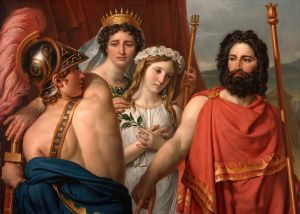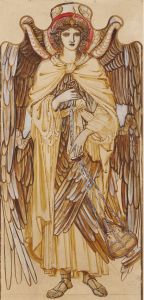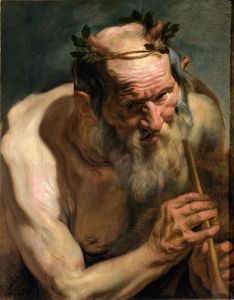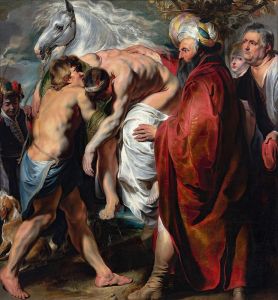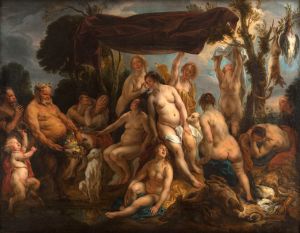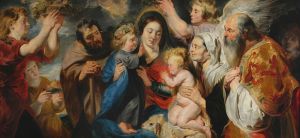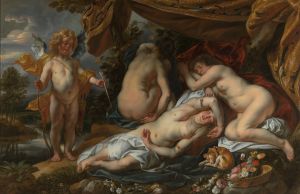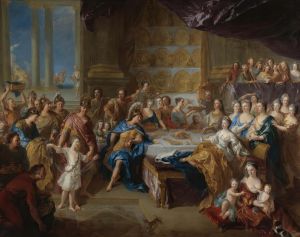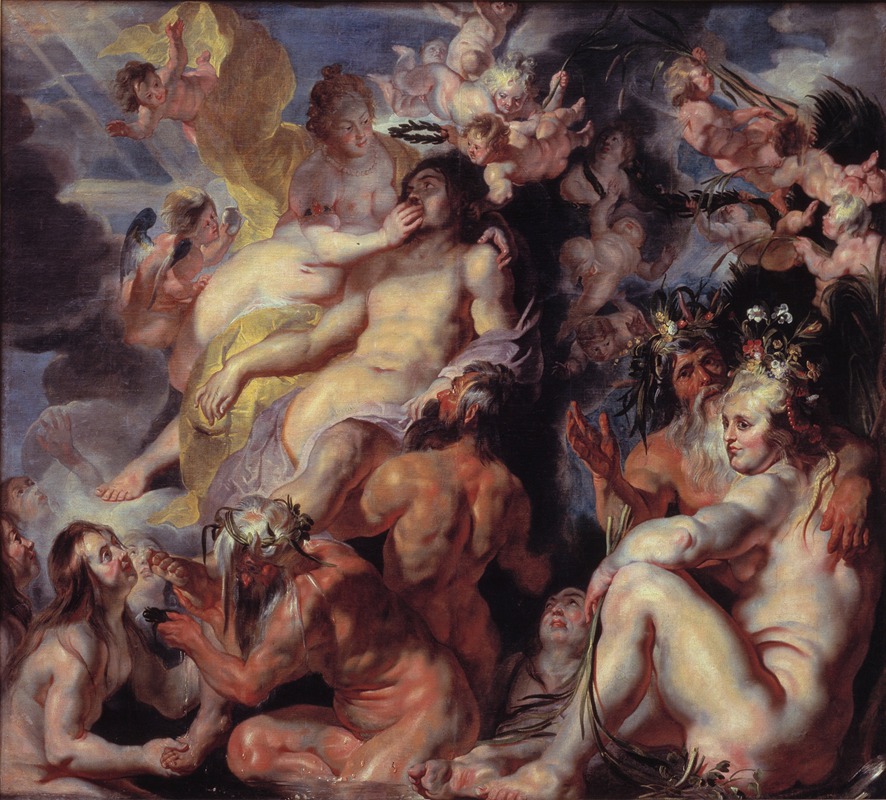
The Apotheosis of Aeneas
A hand-painted replica of Jacob Jordaens’s masterpiece The Apotheosis of Aeneas, meticulously crafted by professional artists to capture the true essence of the original. Each piece is created with museum-quality canvas and rare mineral pigments, carefully painted by experienced artists with delicate brushstrokes and rich, layered colors to perfectly recreate the texture of the original artwork. Unlike machine-printed reproductions, this hand-painted version brings the painting to life, infused with the artist’s emotions and skill in every stroke. Whether for personal collection or home decoration, it instantly elevates the artistic atmosphere of any space.
Jacob Jordaens, a prominent Flemish Baroque painter, created "The Apotheosis of Aeneas," a work that exemplifies his mastery in depicting mythological themes with dramatic flair and vivid detail. Jordaens, who lived from 1593 to 1678, was a leading figure in the Flemish art scene, known for his dynamic compositions and robust figures. He was a contemporary of Peter Paul Rubens and Anthony van Dyck, and although he never traveled to Italy, Jordaens was heavily influenced by the Italian Renaissance and Baroque styles, which he adapted to his own unique approach.
"The Apotheosis of Aeneas" is based on the Roman mythological tale of Aeneas, a Trojan hero and the son of Venus, the goddess of love, and Anchises, a mortal. This narrative is famously recounted in Virgil's epic poem, the "Aeneid," which tells the story of Aeneas's journey from Troy to Italy, where he becomes an ancestor of the Romans. The apotheosis, or deification, of Aeneas is a significant moment in the myth, symbolizing his transformation from a mortal hero to a divine figure.
In Jordaens's depiction, the painting captures the moment of Aeneas's ascension to the divine realm. The composition is characterized by its dynamic movement and the dramatic interplay of light and shadow, typical of the Baroque style. Jordaens employs a rich color palette and a strong sense of realism, bringing the mythological figures to life with expressive gestures and emotive facial expressions. The use of chiaroscuro enhances the three-dimensionality of the figures, adding depth and intensity to the scene.
Jordaens's work often included allegorical and mythological subjects, and "The Apotheosis of Aeneas" is no exception. The painting reflects the Baroque fascination with grand narratives and the exploration of human and divine themes. Jordaens was known for his ability to convey complex stories through his art, and this painting is a testament to his skill in integrating narrative and visual elements.
The painting also highlights Jordaens's proficiency in depicting the human form, a skill he honed through his studies and practice in Antwerp, where he spent most of his life. His figures are robust and full of vitality, reflecting the influence of Rubens, yet they possess a distinctiveness that is uniquely Jordaens's own.
"The Apotheosis of Aeneas" is a fine example of Jordaens's contribution to the Baroque movement, showcasing his ability to blend dramatic storytelling with technical prowess. While Jordaens may not have achieved the same level of international fame as some of his contemporaries during his lifetime, his work has since been recognized for its artistic merit and its role in the development of Flemish Baroque painting. Today, Jordaens's paintings, including "The Apotheosis of Aeneas," are appreciated for their dynamic compositions and their ability to capture the essence of mythological and historical narratives.





